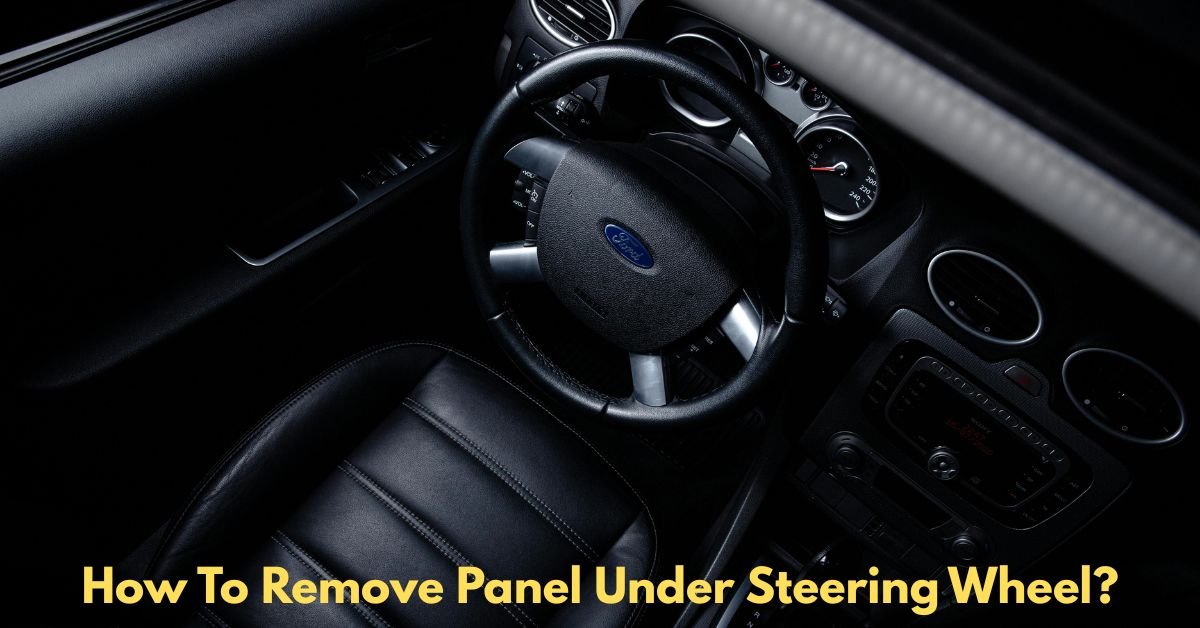Whether you’re replacing a faulty component, installing a new accessory, or simply curious about what’s behind your car’s dashboard, knowing how to remove the panel under the steering wheel can be quite handy. This lower dashboard panel—often called the knee bolster or under-dash panel—typically houses components like wiring, fuses, or diagnostic ports. Thankfully, with a little care and the right tools, it’s a relatively simple DIY task.
In this blog post, we’ll guide you step-by-step on how to safely remove the under-steering-wheel panel in most vehicles. While the exact process may vary slightly depending on the make and model of your car, the general steps remain the same.
How to Remove the Panel Under the Steering Wheel: A Step-by-Step Guide
Tools You’ll Need
Before you start, gather these basic tools:
- Flathead screwdriver
- Phillips-head screwdriver
- Trim removal tool (optional but helpful)
- Flashlight or work light
- Zip bag or container for screws
Step 1: Safety First
Before working on any part of your vehicle’s dashboard, especially around electrical components, disconnect the battery. This helps avoid short circuits or accidental airbag deployment. To do this:
- Open the hood.
- Use a wrench to disconnect the negative (-) terminal of the battery.
- Wait about 10-15 minutes before working to ensure all systems power down.
Step 2: Inspect the Panel
Examine the area beneath the steering wheel closely. You’ll likely see several screws along the bottom edge and possibly some plastic clips holding it in place. Some panels also extend into the footwell or are integrated into the lower dash.
Look for:
- Visible screws (usually Phillips head)
- Hidden fasteners near side panels or vents
- Sections that might be clipped in rather than screwed
Step 3: Remove the Screws and Fasteners
Using your screwdriver, remove all visible screws. Be sure to keep them in a small container so you don’t lose them. For screws hidden behind caps or trim pieces:
- Gently pry off any plastic covers using a flathead screwdriver or trim removal tool.
- Remove the screws underneath.
Older plastic might be brittle and break when compressed, so use caution.
Must Read: Why Mercedes Gear Shift On Steering Wheel?

Step 4: Gently Pry the Panel Loose
Once all screws are out, try gently pulling the panel forward. If it resists, double-check for any remaining screws or hidden clips.
Some tips:
- Work your way around slowly, starting at one corner.
- Utilize a plastic trim tool to prevent harming nearby panels.
- If clips are holding it, a firm tug may be needed—but don’t yank it aggressively.
Step 5: Disconnect Electrical Components (If Needed)
Many under-steering-wheel panels contain components like:
- OBD-II diagnostic port
- Light switches or sensors
- Airbag connectors (be very cautious)
If you encounter wiring:
- Gently unplug connectors by pressing the release tabs.
- Avoid pulling directly on wires.
- If you’re unsure about a connection, take a photo for reference before unplugging.
Step 6: Set the Panel Aside
With everything disconnected, place the panel in a safe spot where it won’t be stepped on or scratched. You now have clear access to the components behind it for further repairs, inspections, or installations.
Bonus Tips
- Label Your Screws: If different screws come from different spots, label them to make reinstallation easier.
- Check for Hidden Fasteners: Some vehicles have bolts tucked under rubber trim or carpet edges.
- Don’t Force Anything: If it doesn’t come off with gentle force, something is still connected.
Step 7: Reinstallation
Once you’ve finished your work, simply reverse the steps:
- Reconnect any electrical connectors.
- Align the panel back into place.
- Reinsert all screws and tighten gently.
- Reconnect the battery and test functionality.
Conclusion
Removing the panel under the steering wheel is a great beginner DIY task that opens the door to many other repairs and modifications. As long as you take your time and follow these steps, you can complete the process in under 30 minutes. Whether you’re chasing down a rattle, installing a dash cam, or checking a fuse, a little patience goes a long way.
Got a specific vehicle in mind? Let me know, and I can provide model-specific steps or diagrams.
